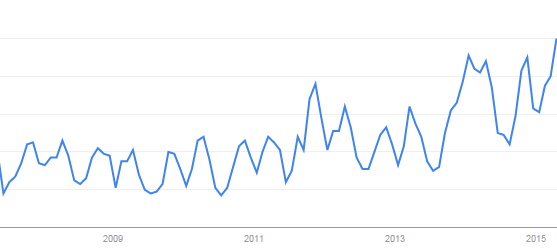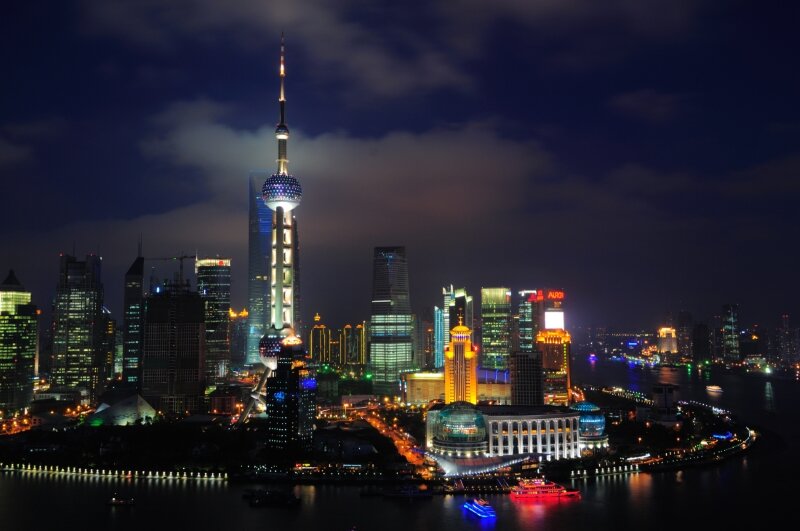The president has called it the “defining challenge of our time.”
And he is not the only one focusing on “income inequality.” A simple Google Trends chart (below) shows how interest in that search term has increased significantly over the past few years.

Google Trends Chart – Income Inequality 2009-2015
But what disturbs me about the focus on “income inequality” and similar arguments over the growing divergence between the rich and poor is that I believe it misses the bigger picture. In a recent Op-ed piece for the Wall Street Journal, Stanford professor and economist Edward Lazear reminds us of clear, recent examples of how a free market system can make the lives of the poor around the globe better, not worse.
Professor Lazear points to the fact that the poor in the developing world are significantly better off than just a few decades ago.
“In 2013, the World Bank reported that the number of people world-wide living on less than $1.25 a day had decreased dramatically since the early 1980s. In 1981 half those in the developing world had income below this threshold. By 2011 only 17% lived on less than $1.25 a day.”
Let me hasten to add that the above number is indeed an inflation-adjusted figure. Lazear then goes on to focus specifically on China, India and Vietnam as clear examples:
“In China 84% fell below the level in 1981, a proportion that shrunk to 6% by 2011. In India the figure fell to 24% in 2011 from 66% in 1979… In 1993, Vietnam had 64% of its then nearly 70 million people in poverty. But by 2008, after implementing market-based reforms, and with a population of 85 million, the percentage of Vietnamese in poverty had fallen to 17%, according to the World Bank.”
How was this remarkable progress achieved? Was it by top-down government intervention, stimulus packages, or “jobs bills?” Let’s look at what China did first:
“In China, reduction of state control began in the 1980s under Deng Xiaoping. These included domestic policies that replaced much of the centrally planned economy with market-based activity as well as opening China to international trade and foreign investment. Early reforms occurred in agriculture, where farmers were allowed to retain surpluses from their plots.
In 1986 China’s “Contract Responsibility System” was enacted, which allowed enterprises to retain profits above quota requirements. In the same year China established “the General Principles of Civil Law,” which provided the basic rules for a market economy. These included recognition of private-property ownership through shares that could be transferred, creditor rights that required the repayment of private debts, and intellectual-property protection that defined authorship and patents.
In 1979 China established a law for foreign joint ventures and in 1986 applied to rejoin the General Agreement on Tariffs and Trade. In 1988 the government began allowing large private firms to operate in the economy; even state-owned enterprises became autonomous entities, responsible for their own profits and losses. In that same year, according to the International Monetary Fund, 53% of retail sales in China occurred at market prices.”
So a clear record of growth and economic improvement exists for some of the world’s poorest people as a direct result of more market freedom, not less. In India, prof. Lazear describes some very similar conditions:
India undertook major reforms in the early 1990s after obtaining a bailout from the IMF, conditioned on economic liberalization, which included reductions in tariffs, deregulation and lower taxes. By 1996 the average tariff in India was 26%, down from 87% in 1990. Licensing requirements, which restrict entry and resource mobility, were eliminated in most industries.
In 1992 India liberalized capital markets and opened them to overseas investors. Reserve requirements, which were well above those for most developed countries, were reduced in the late 1990s and banks were given more flexibility in setting their own loan rates. The share of bank assets held by private banks grew to 17% in 1998 from 11% in 1992.”
And in Vietnam, again a similar story:
“In Vietnam, collective farming ended in 1986 and control over state-owned facilities was loosened. In 1989 reforms liberalized all prices, including interest and foreign-exchange rates. The consequence has been a sharp reduction in poverty and impressive growth rates that, according to the World Bank, have averaged more than 6% over the past decade.”
So, the focus on the difference between the income levels of the rich and poor is misplaced. Having “free-er” markets is the best way of providing economic opportunity to everyone, rich and poor. The true measure of a country’s economic success is not the number of millionaires vs. the number of poor, it is the amount of freedom the poor have to improve their economic situation.





